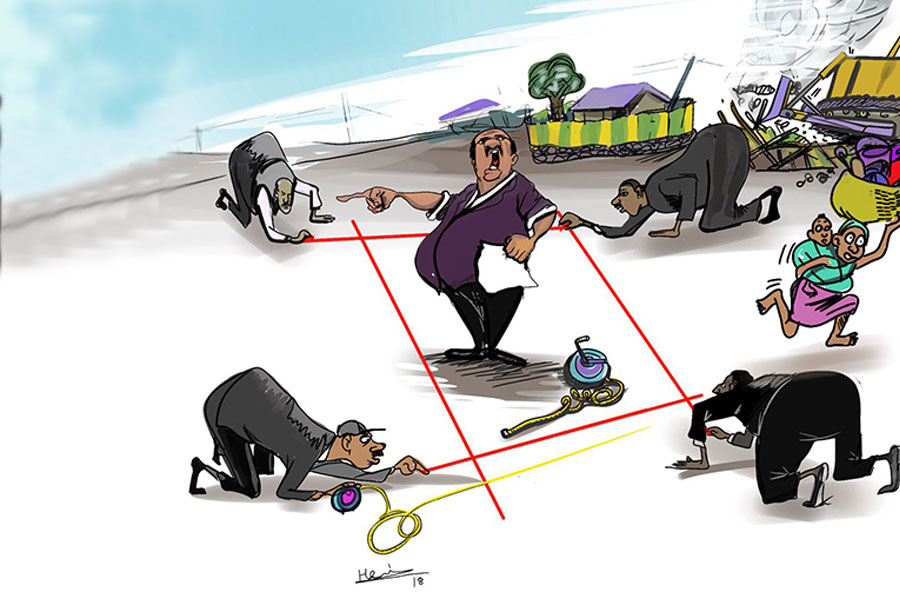
Featured | Oct 16,2021
A Chinese construction and engineering company took over the operations and management of the Qality Wastewater Treatment Plant, an agreement that will last for three years.
The Addis Abeba Water and Sewage Authority (AAWSA) has signed a contract agreement with China Gezhouba Group Co. Ltd. (CGGC) to manage the treatment plant. In the contract, which involves 6.5 million dollars, CGGC will take part in operating, managing, maintaining and building the capacity of the skilled workforce and the transfer of technology.
To hire a company that will manage and operate the plant, the Authority floated a tender at the beginning of September. CGGC won the bid in November by offering the lowest price. The Chinese firm commenced operations this month.
Founded in 1970 as a member of China Energy Engineering Group Co Ltd, China Gezhouba Group Company Limited is a state-owned enterprise that has also become involved this year in pre-power generation work at the Grand Ethiopian Renaissance Dam (GERD).
The treatment plant lies on the east banks of the Tinishu Aqaqi Wenz ('Little Aqaqi River') in the Qality area of Addis Abeba. The plant is currently operating at less than 40pc of its daily capacity.
The treatment plant lies on the east banks of the Tinishu Aqaqi Wenz ('Little Aqaqi River') in the Qality area of Addis Abeba. The plant is currently operating at less than 40pc of its daily capacity.
The length of the contract could be extended to five years, according to Tesfalem Bayou, deputy general manager of sewerage disposal and development service at the Authority.
Qality Wastewater Treatment Plant, which was under an expansion process to increase the plant's refining capacity from 7,500 cubic metres to 100,000 cubic meters a day, took two years to complete and went through six months of testing.
Before the expansion project, the plant, which has been operating since 1973, was operating with a capacity of treating 7,500 cubic metres of influent a day.
Deputy Prime Minister Demeke Mekonnen inaugurated the project with the ex-mayor of Addis Abeba, Diriba Kuma, and Carolyn Turk, the World Bank's country director to Ethiopia and Sudan, in July 2018.
AKTOR, a Greek construction company, constructed the plant with the supervision of a Canadian company, Morrison Hershfield Plc, and a local firm ARMA Engineering. The project included the installation of 30Km of mainline tubes that can feed the treatment plant with sewage waste, plantation of a refinery and 320Km of tributary lines making it the biggest treatment plant of the country.
The treatment plant was built to refine 100,000 cubic metres of wastewater a day that is received from nearly one million residents living in the six districts of the city: Addis Ketema, Kolfe Keranyo, Kolfe, Lideta, Arada and Gulele.
After the plant was inaugurated, the Authority had a hard time running the new plant, according to Tesfalem.
"The current workforce couldn't run the new machines installed in the plant," he said.
The Authority was also challenged with the plant's inability to regulate the acidity of the treated wastewater, this led the Authority to seek international experience, according to him.
"It couldn't regulate the pH level of the wastewater, thus, the release of acidic effluent into the environment affected a lot of farmers around the plant," he said.
In addition to the water treatment plant, the Authority is deploying ten mobile liquid wastewater treatment plants with close to 759 million Br budget at seven condominium sites.
These plants include an eastern site at Yerer, which expects to treat 180,000 cubic metres of liquid waste a day. The Aqaqi site encompasses two smaller sites, Cheffe and south Aqaqi, which are under design and are expected to have a capacity of treating 24,000 cubic metres and 50,000 cubic metres of wastewater, respectively.
Zerihun Getaneh, an environmental lecturer at Addis Abeba University, says that the Authority should work on installing a sewage system pipeline rather than a treatment plant.
"It's pointless to have a treatment plant that big if there are no feeding systems installed all over the city," he said.
The raw sewage treatment at the Qality Wastewater Treatment that was handed over to CGGC.
PUBLISHED ON
Dec 14,2019 [ VOL
20 , NO
1024]

Featured | Oct 16,2021

Fortune News | May 11,2019

Radar | Jul 31,2021

Fortune News | May 16,2020

Radar | Jul 13,2019

Dec 22 , 2024 . By TIZITA SHEWAFERAW
Charged with transforming colossal state-owned enterprises into modern and competitiv...

Aug 18 , 2024 . By AKSAH ITALO
Although predictable Yonas Zerihun's job in the ride-hailing service is not immune to...

Jul 28 , 2024 . By TIZITA SHEWAFERAW
Unhabitual, perhaps too many, Samuel Gebreyohannes, 38, used to occasionally enjoy a couple of beers at breakfast. However, he recently swit...

Jul 13 , 2024 . By AKSAH ITALO
Investors who rely on tractors, trucks, and field vehicles for commuting, transporting commodities, and f...

Oct 4 , 2025
Eyob Tekalegn (PhD) had been in the Governor's chair for only weeks when, on Septembe...

Sep 27 , 2025
Four years into an experiment with “shock therapy” in education, the national moo...

Sep 20 , 2025
Getachew Reda's return to the national stage was always going to stir attention. Once...

Sep 13 , 2025
At its launch in Nairobi two years ago, the Africa Climate Summit was billed as the f...